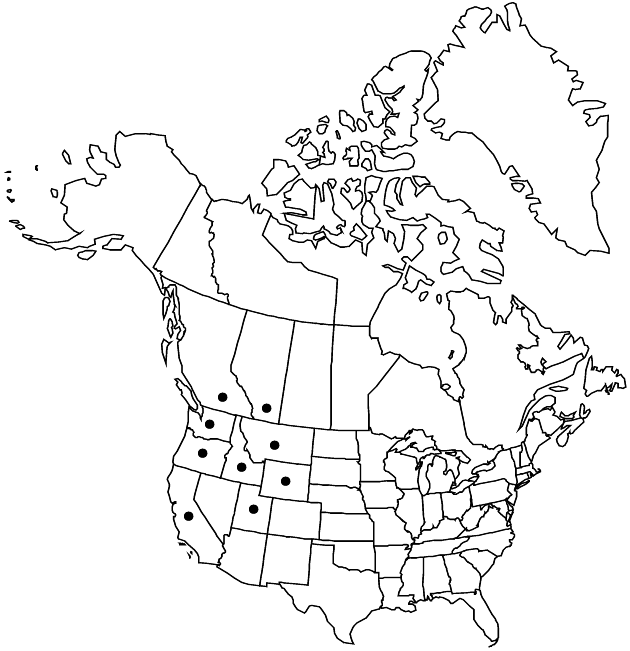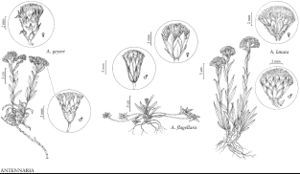Difference between revisions of "Antennaria lanata"
Pittonia 3: 288. 1898.
Common names: Woolly pussytoes
IllustratedEndemic
Basionym: Antennaria carpatica var. lanata Hooker Fl. Bor.-Amer. 1: 329. 1834
FNA>Volume Importer |
imported>Volume Importer |
||
| (6 intermediate revisions by 2 users not shown) | |||
| Line 8: | Line 8: | ||
}} | }} | ||
|common_names=Woolly pussytoes | |common_names=Woolly pussytoes | ||
| − | |basionyms={{Treatment/ID/ | + | |special_status={{Treatment/ID/Special_status |
| + | |code=F | ||
| + | |label=Illustrated | ||
| + | }}{{Treatment/ID/Special_status | ||
| + | |code=E | ||
| + | |label=Endemic | ||
| + | }} | ||
| + | |basionyms={{Treatment/ID/Basionym | ||
|name=Antennaria carpatica var. lanata | |name=Antennaria carpatica var. lanata | ||
|authority=Hooker | |authority=Hooker | ||
| + | |rank=variety | ||
| + | |publication_title=Fl. Bor.-Amer. | ||
| + | |publication_place=1: 329. 1834 | ||
}} | }} | ||
|synonyms= | |synonyms= | ||
| Line 35: | Line 45: | ||
-->{{#Taxon: | -->{{#Taxon: | ||
name=Antennaria lanata | name=Antennaria lanata | ||
| − | |||
|authority=(Hooker) Greene | |authority=(Hooker) Greene | ||
|rank=species | |rank=species | ||
| Line 49: | Line 58: | ||
|publication title=Pittonia | |publication title=Pittonia | ||
|publication year=1898 | |publication year=1898 | ||
| − | |special status= | + | |special status=Illustrated;Endemic |
| − | |source xml=https:// | + | |source xml=https://bitbucket.org/aafc-mbb/fna-data-curation/src/2e0870ddd59836b60bcf96646a41e87ea5a5943a/coarse_grained_fna_xml/V19-20-21/V19_636.xml |
|tribe=Asteraceae tribe Gnaphalieae | |tribe=Asteraceae tribe Gnaphalieae | ||
|genus=Antennaria | |genus=Antennaria | ||
Latest revision as of 19:53, 5 November 2020
Dioecious. Plants 3–20 cm (caudices branching or rhizomes stout). Stolons none. Basal leaves 3-nerved, narrowly oblanceolate, 10–60(–100) × 3–12 mm, tips acute, faces gray-woolly or tomentose. Cauline leaves linear, 5–40 mm, mid and distal flagged. Heads 3–9 in corymbiform arrays. Involucres: staminate 4.5–6 mm; pistillate 5–8 mm. Phyllaries (proximally light brown, dark brown, or olivaceous) distally whitish or light brown. Corollas: staminate 3–4.5 mm; pistillate 2.5–4 mm. Cypselae 1–1.6 mm, glabrous; pappi: staminate 4–5 mm; pistillate 3.5–5 mm. 2n = 28 (under A. neodioica).
Phenology: Flowering summer.
Habitat: Protected alpine and subalpine sites, gravelly or sandy soils near conifers at timberline
Elevation: 1400–3400 m
Distribution

Alta., B.C., Calif., Idaho, Mont., Oreg., Utah, Wash., Wyo.
Discussion
Selected References
None.
Lower Taxa
None.
